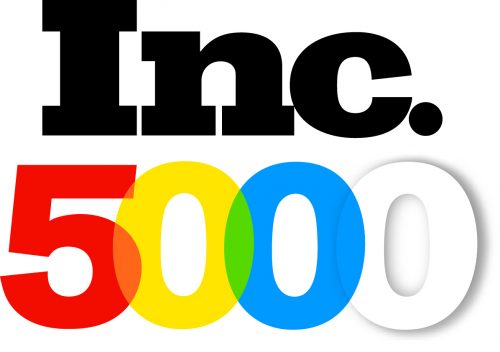According to reports, the average American has round about $38,000 in personal debt.
Is this a lot? Or is it manageable?
How much debt is too much?
Utilizing credit and lending facilities can often add to your quality of life and your prospects. Taking out a student loan or borrowing money to start a business might be the best thing you can do in some circumstances.
However, there comes a time when debt can start to take away from your life and goals, rather than facilitate them. Excessive debt can stand in the way of your dreams, reduce your ability to save, and even impact your health.
What’s more, growing debt can quickly escalate from something that is merely holding you back—to something that can ruin you.
If you have swelling debt or feel that debt is impacting your quality of life, the first thing you need to do is ascertain how much is too much.
Once you have done this, we have some good news for you. No matter the amount of debt you owe, there is a solution out there. So, keep reading to find out exactly how much debt is too much, as well as what you can do.
How Much Debt Is Too Much?
The questions ‘how much debt is too much’ will have a different answer for each person. The key is, what relationship does your debt and its monthly payments have to your assets and your income?
If your debt is larger than it should be in relation to your monthly salary and your assets, then it is definitely time to start slashing it.
Some sources advise that consumer debt payments (such as credit card payments, car payments, and loan payments) should never exceed more than 20% of your income.
Other forms of asset building debt, such as mortgage payments, are an exception. Because they work to form assets, these types of debts do not affect one’s financial health as much as consumer debts.
However, even if a large portion of your debt payments are towards something like a mortgage—having a high debt payment to income ratio is still not advisable.
Besides this basic assessment, there are a few other indicators of detrimental levels of debt. These include:
- You find yourself struggling to pay monthly bills
- You are unable to create retirement, general, and emergency savings
- You can only afford the minimum payments on your debt
- You rely on your credit card to pay expenses
If you find yourself experiencing any of the above, then you can take this as a sign that your debt is too high and you need to start taking action
What to Do If You Have Too Much Debt
It can be scary assessing one’s debt, especially debt that feels unmanageable.
However, this step is key. Once you have crunched the numbers, you can start taking action
Here are the first things that you can do.
Cut Back on Spending
Yes, it’s boring but true. One of the integral ways of fighting debt is to stop any excess spending.
Although this alone is not likely to solve your problem—bulletproofing your spending habits is something that can go a long way to ensuring the success of any debt resolution you might choose.
Look Into Debt Resolution
Once you have investigated ways to minimize expenses, the next step is to take a look a debt resolution.
When looking at the different options, it is important to find a solution that works for you. Depending on your unique financial situation, some solutions will be more effective than others.
Let us now jump into the main different types of debt solutions and discuss the pros and cons of each. Once we are done, you should have a clearer idea of what types of options would work best for you.
Debt Resolution Explained
Most debt resolution works to either reduce your interest rate, reduce your total debt, and/or consolidate your debt so that you only have one monthly payment.
How this is achieved varies between the different types of solutions. Let’s take a look.
Debt Consolidation Through a Loan
One of the most common type of debt resolution is debt consolidation via a loan. Debt consolidation is the practice of pooling your debt, so that you only have one amount to keep track off, and one payment to make each month.
This aspect alone is great for budgeting and planning.
However, debt consolidation has another perk. In some cases, depending on your current interest rates you are paying, you might be able to secure a lower overall interest rate on your total debt.
For example, say you owe $1,000 at 17% interest and $3,500 at 15% interest. If you can manage to get a loan with a lower interest rate than these two debts, you will pay less interest.
However, there is one thing to be aware of when looking at taking out a loan to consolidate your debt. Most personal and consolidation loans come with origination fees. Do not ignore this cost, as it can annul what you gain if you are only able to secure a slightly reduced interest rate.
Also, when considering this type of loan, take into account how regular you are with your payments. If you often miss payments, it might be a better idea to think about this next option, balance transfer cards.
Debt Consolidation Through Balance Transfer Cards
Another way to consolidate your debt and gain lower (or zero) interest rates is to take advantage of balance transfer cards. In some cases, you may be able to secure a zero interest rate for a certain period, usually between 12 and 14 months.
This has the advantage of both consolidating your debt, and giving you a chance to pay back your debt at a lower interest rate.
Another advantage to this solution is that because you are using a line of credit instead of a personal loan, you will also have more flexibility on payments. This can be ideal in many situations, especially if your income fluctuates or you have previously struggled to meet monthly payments.
At the same time, it is important that you have a plan in place to settle the debt before the standard interest rate kicks in, otherwise, you might end up paying more interest than through other options.
Debt Settlement
Debt settlement is generally carried out by debt settlement companies. They work on your behalf to negotiate with your creditors to reduce your interest and total debt.
After you sign up, they’ll usually advise you to cease making your monthly debt payments. Instead, these payments go into an account which the company controls.
When payment is not made over a period of months, your creditors will become increasingly urgent in their demands. In some cases, they may become desperate enough to agree to lower interest rates, longer terms, or even reduce the amount you owe.
Creditors aren’t required to enter into negotiations, but it’s within your legal rights to try and set up negotiations. Some people even opt to do this on their own steam, without a debt settlement company behind them.
While this is totally feasible, be aware that a company experienced in debt negotiations might be able to get better results. Primarily because they are experts and they have leverage.
For example, when you negotiate with a creditor maybe you have $15,000 in debt, but a debt settlement company has hundreds of thousands of maybe millions of dollars in debt they will settle with the creditor that year. Plus, they have many years working with the creditor and are more apt to be able to negotiate much better terms for you.
If you have looked into debt settlement before, you probably know this solution traditionally has a bad rap, which often comes from creditors pushing this narrative because they don’t want people to settle their debt, but stay in debt since that’s how they make their money. Despite all the claims that debt settlement options are scams, and that they’ll wreck your credit score—this isn’t the full truth
Of course, as with all aspects of finance, there are unsavoury debt settlement companies out there just like there are in any other industry. The way to avoid these is to choose a service that has good ratings with organizations such as the Better Business Burea and which are affiliated with controlling bodies.
As far as credit scores are concerned, yes your credit score might drop and first, but in most cases they quickly reound higher than before. By keeping up with more manageable debt after settlement, you will finally have the opportunity to build your score up to a level that you’re happy with. This is better than falling further into debt thanks to unmanageable payments—something that’s sure to tank your credit score.
Bankruptcy
The final debt resolution option you can choose is to file for bankruptcy. Filing for bankruptcy will annul certain types of debt.
However, there are a number of disadvantages to this option and should only be considered as a final and desperate measure.
Firstly, filing for bankruptcy can cause you to lose valuable assets, such as a second property or personal valuables. Second, some types of debts will remain, such as:
- Child support
- Mortgage debt
- Unpaid taxes
- Credit debt incurred within 90 days of filing for bankruptcy
- Court fees
Additionally, filing for bankruptcy will also drastically affect your credit score, usually for up to 7-10 years. This can, in turn, impact job applications, rental applications and credit applications.
Finding the Best Solution for Your Needs
How much debt is too much? Anything that is unsustainable and which is impacting your ability to save and become financially secure.
What to do if you have too much debt? Find the best debt resolution option that will help you get back on track.
If you need to start searching for a plan asap, then look no further. Our search tool can match you up with hundreds of solutions specifically tailored to your needs. Fill out our online form to see your offers, or contact us if you have any questions.
We look forward to facilitating your financial freedom today.




